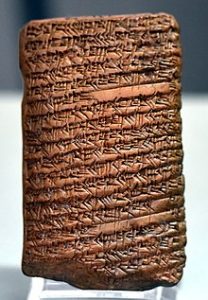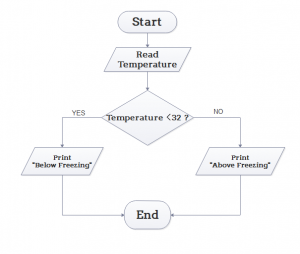Definition of ‘Algorithm’
In a professional setting, we may encounter individuals with a plethora of backgrounds and knowledge bases. Thus, it is imperative that we are able to communicate effectively and explain topics at differing degrees of technicality. For this assignment I will be using the word “algorithm”, and will define the term through the use of parenthetical, sentence and expanded definitions. I will introduce the term to a high school programming class who are new to computer science, and as such, have limited knowledge on the subject. I aim to phrase my definition as such.
Situation
Hi all! Welcome to Programming 12. Today we’ll be discussing a word you may have heard thrown around in the media — that’s because it’s a pretty important word to us in today’s world! But what does it mean?
Parenthetical definition
A sequence of instructions telling a computer what to do.
Sentence Definition
In terms of programming, an algorithm is a finite list of instructions, most often used in solving problems and performing tasks. A search engine algorithm, for example, takes keywords as input, searches its associated database for relevant web pages, and returns results.
Expanded Definition
History
The concept of algorithm has existed since ancient times. Arithmetic algorithms, such as a division algorithm and Pythagorean theorem, were used by ancient Babylonian mathematicians c. 2500 BC and Egyptian mathematicians in 1550 BC!

Figure 1 Clay tablet with Pythagorean theorem algorithm from 1595 BCE
Source: From Tell Harmal, Iraq. 2003-1595 BCE. Iraq Museum
Required Conditions
In order to be considered an algorithm, it must terminate after a finite number of steps (meaning it cannot go on forever). Further, each step must be precisely defined, and the actions to be carried out must be rigorously and unambiguously specified for each case.
Example
Algorithms allow us to give computers step-by-step instructions in order to solve a problem or perform a task. For example, let’s consider the following algorithm:
For every temperature reading, print “below freezing” if the temperature is below 32, and print “above freezing” if the temperature is above 32.
How would we start to follow this algorithm? A step-by-step procedure can be as follows:
- Read Temperature
- Evaluate Temperature
a. IF temperature is greater than 32: Print “Above Freezing”
b. ELSE IF temperature is below 32: Print “Below Freezing” - Algorithm Terminates

Figure 2 Flow chart of simple temperature algorithm
Source: Ni Solutions, 2014. Flowchart for Temperature Example
Conclusion
In conclusion, algorithms are a critical part of our world today, and is simply a concrete set of steps for accomplishing a task.
Works Cited
Brogan, J. (2016). What’s the Deal with Algorithms? https://slate.com/technology/2016/02/whats-the-deal-with-algorithms.html
Lynch, A. (2020). Explain Algorithm and Flowchart with Examples. https://edrawsoft.com/explain-algorithm-flowchart.html
Rouse, M. (2014). What Is Algorithm? – Definition from WhatIs.com. https://whatis.techtarget.com/definition/algorithm
Texas A&M University. (2019). Babylonian Mathematics. https://www.math.tamu.edu/~dallen/masters/egypt_babylon/babylon.pdf
Leave a Reply